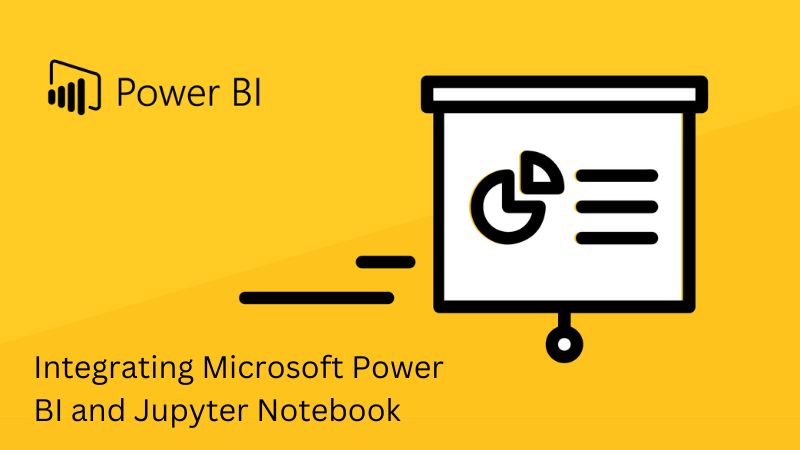Integrating Microsoft Power BI and Jupyter Notebook: An Overview of the Benefits
One of the areas that is experiencing the most rapid expansion in the globe right now is analytics. Because the demand for data scientists is so much higher than the supply, it can be challenging for businesses to discover and rely on qualified professionals in the field of Microsoft Power BI Development. With the help of the new power bi client Python library, you can import your Power BI statistics into a Jupyter notebook.
Because of the new package, it is now possible to quickly incorporate Power BI reports, dashboards, dashboard panels, report graphics, and Q&A into Jupyter notebooks. You will have the ability to transfer data from graphics contained within a Power BI report to the Jupyter notebook for the purpose of conducting an in-depth data investigation. In addition, you can narrow the report to perform a speedy analysis, and you can use favorites to implement a previously stored view.
Jupyter Notebook and Microsoft Power BI: An Introduction
Jupyter Notebook and Microsoft Power BI are two highly effective tools that can be utilized in the process of data analysis. Microsoft Power BI is a business analytics program that allows end users to make statistics and reports that is relatively simple for end users to understand. It offers dynamic representations and business intelligence features. Jupyter Notebook, on the other hand, is an online application which are open-source and lets you to make and share documents that include live code, numbers, representations, and written narratives. It also allows you to design and share these types of documents. It is a helpful tool for data investigation, analysis, and visualization, and data scientists and researchers make extensive use of it. Additionally, the integration enables modifications in real time to be presented in the reports and dashboards that you use, which ensures that the data you use is always reliable.
Creating a Power BI data model from a Jupyter Notebook file
- The extraction of a Power BI data model from a Jupyter Notebook file can be an effective and efficient method for conducting data analysis in a more structured format.
- It is necessary for you to execute your code in the Jupyter Notebook and check that the result is consistent with the data that you intend to use.
- After you have your data saved in the Jupyter Notebook file, you are able to start developing the data model for your Power BI report. Launch Power BI, then go to the Home page and select "Get Data" from the drop-down menu. Choose "Other" from the drop-down menu, then "Python Script" from the following screen.
- Copy the code that retrieves the data you want to use and enter it into the Python Script window. The code should come from the Jupyter Notebook file. After that, choose the "Load" option to build the data model.
- After that, you'll be able to start developing representations in Power BI by utilizing the data model that you just finished developing. This may take the form of diagrams, charts, or any other kind of graphic representation of the data.
Benefits of Integrating Microsoft Power BI Jupyter Notebook
Supports many programming languages
The Jupyter Notebook is a collective development environment that can be used through the web and supports a wide range of programming languages that includes Python, R, Julia, and a great many more. It can create and perform code within a single document, it is a great tool for educational purposes, scientific computing, and data scrutiny.
Enhance your data analytics
When it comes to data analytics for data-driven organizations, this combination is a step forward that will transform the game. You can create code in Python to manipulate data, perform analyses on that data, and recognize patterns.
Used in many industries
This integration is able to evaluate data gathered from manufacturing processes, locate areas with room for improvement, and enhance overall operations. The businesses are able to boost product quality while simultaneously lowering operational expenses when it made decisions based on data.
Machine learning
The Jupyter Notebook offers an environment that is ideal for the development and testing of machine learning models. You can build models with well-known machine learning frameworks such as Scikit-learn and TensorFlow and afterward use these algorithms in Power BI to make projections.
Bottom Line
There is a long list of advantages that come with Microsoft Power BI Development and Jupyter Notebook. It provides users with the ability to communicate with one another are both necessary steps toward reaching at combined solutions. This combination is used by many businesses for data cleansing and transformation, simulation of numbers, experimental data analysis, data visualization, statistical modeling, artificial intelligence, deep learning, and other areas as well.
